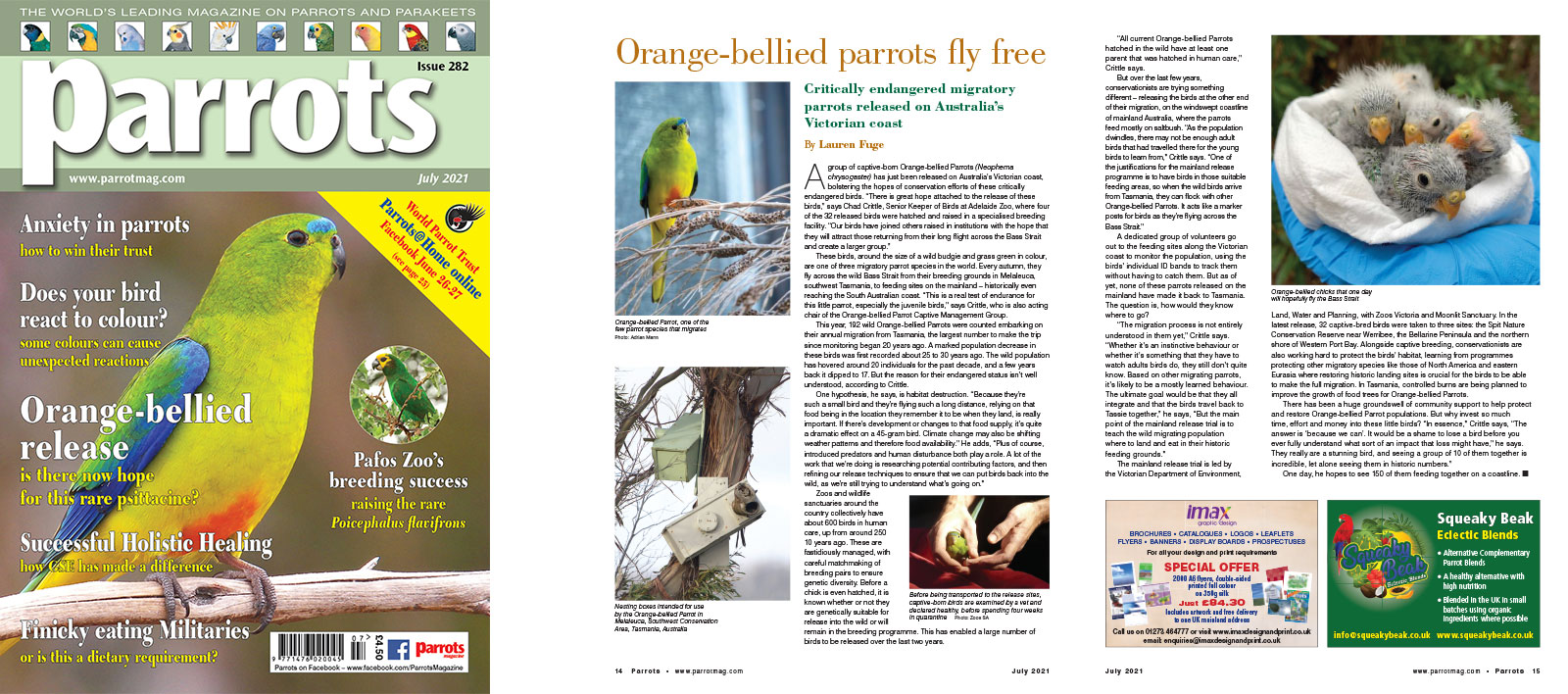
By Lauren Fuge
A group of captive-born Orange-bellied Parrots (Neophema chrysogaster) has just been released on Australia’s Victorian coast, bolstering the hopes of conservation efforts of these critically endangered birds. “There is great hope attached to the release of these birds,” says Chad Crittle, Senior Keeper of Birds at Adelaide Zoo, where four of the 32 released birds were hatched and raised in a specialised breeding facility. “Our birds have joined others raised in institutions with the hope that they will attract those returning from their long flight across the Bass Strait and create a larger group.”
These birds, around the size of a wild budgie and grass green in colour, are one of three migratory parrot species in the world. Every autumn, they fly across the wild Bass Strait from their breeding grounds in Melaleuca, southwest Tasmania, to feeding sites on the mainland – historically even reaching the South Australian coast. “This is a real test of endurance for this little parrot, especially the juvenile birds,” says Crittle, who is also acting chair of the Orange-bellied Parrot Captive Management Group.
This year, 192 wild Orange-bellied Parrots were counted embarking on their annual migration from Tasmania, the largest number to make the trip since monitoring began 20 years ago. A marked population decrease in these birds was first recorded about 25 to 30 years ago. The wild population has hovered around 20 individuals for the past decade, and a few years back it dipped to 17. But the reason for their endangered status isn’t well understood, according to Crittle.








Parrot Chat
Buyers Guides
Breeding articles